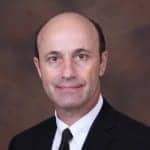Inside Clinical Research | August 2016 Hearing Review

Dr Cacace’s interests in acoustics include psychoacoustics, electroacoustics, APD, electrophysiology, neuroimaging, tinnitus—and music.
Anthony T. Cacace, PhD, is an audiologist and research professor of Communication Sciences and Disorders at Wayne State University. Dr Cacace, along with his colleagues Emile de Kleine, Avril Genene Holt and Pim van Dijk, has assembled a brand new, highly interesting and unique 2016 textbook (available from Plural Publishing) titled Scientific Foundations of Audiology–Perspectives from Physics, Biology, Modeling and Medicine. Dr Cacace was staff scientist at the Advanced Imaging Center, the Neurosciences Institute, Department of Neurology, and was director of oto-neurological research in the Division of Otolaryngology at Albany Medical College prior to joining Wayne State. His interests include auditory processing disorders (including the book Controversies in Central Auditory Processing Disorder), psychoacoustics, electroacoustics (including otoacoustic emissions and middle ear power reflectance), electrophysiology, neuroimaging, and tinnitus.
Beck: Good morning, Anthony. It’s a pleasure to speak with you today. I’d like to discuss your latest book.
Cacace: Good morning, Doug. I am delighted to participate in this interview and I’m also enthusiastic to have this opportunity to cover some of the unique topics contained in our new book. The other three editors are clinical and basic scientists who have made advancements in many different areas related to audiological science in general and auditory neuroscience/molecular biology in particular. Moreover, they have been instrumental in selecting the material found in the book, suggesting notable authors to write chapters, and making contributions of their own.
Beck: I have to say the first thing that struck me about the book is the title. As you know, I’ve been saying for decades that, if we don’t have scientifically based protocols, processes, and outcomes, then we’ve got precious little to base our profession on! That is, when we find ourselves defending or explaining something and we default to “that’s the way we’ve always done it,” then we’ve got a real problem. We truly need Random Controlled Trials (RCTs) or experimental versus control—proven science and protocols.
Cacace: Absolutely. I agree, and as you surmised, that’s why we put this book together. Additionally, we have asked the contributors to make highly technical topics easy for students to understand so that the material and ideas can be integrated directly into every day clinical practice. We also asked contributors to highlight areas where the knowledge base is limited so that students may advance those domains by performing individualized research projects.
Seasoned clinicians can also benefit from this material. I think it’s important to emphasize the fact that, as doctoral-level clinicians and clinical/scientists, audiologists represent the “translational interface” between basic science and clinical concerns. As a consequence, audiologists are in a unique position to implement breakthroughs in engineering, molecular biology, neuroimaging, genetics, medicine, nanobioscience, etc, and deliver them to the clinic. Having a well-established scientific foundation will ensure that the profession will advance and prosper.
Beck: Agreed. OK, so let’s address my favorite chapter in the book, authored by you and my old pal from SUNY Buffalo, Robert Burkard, PhD, which is Chapter 3, titled “The Audiogram: What It Measures, What it Predicts and What it Misses.”
I loved this chapter because the audiogram is so basic, so powerful, and so influential…Yet, any 14-year-old can learn to create an audiogram, and once it’s created, it generally becomes the basis of our diagnostic and rehabilitative thoughts. Still the audiogram is often a weak construct, and itself is often not created as well as it should be, and is sometimes misinterpreted!
Cacace: As you said, the audiogram seems simple, but the creation and interpretation of an excellent audiogram can be complex and demanding. Clearly, more attention and scrutiny need to be applied here. In general, one might say the standard clinical audiogram contains limited data from which one can draw meaning and conclusions about the entire auditory system. That is, the typical audiogram consists of perhaps 6 to 10 thresholds (usually one data point per octave) from 250 to 8,000 Hz. And frankly, in many instances, such an approach is not supported by the available science.
As we point out in Chapter 3, there’s a lot of “unexamined” sensory epithelium that these limited data points fail to represent. In addition to the biologic interpretation of these issues, having the expertise of someone like Dr Burkard as a co-author enhances other important concerns, like air conduction, bone conduction, and speech-related calibration issues, ANSI and international standards, and other aspects of this topic related to animal research.
Beck: One of the examples from the book is the issue of “frequency dependent effects below 1,000 Hz.” Would you address those issues, please?
Cacace: Sure. When an audiogram demonstrates hearing thresholds of perhaps 80-90 dB HL at 250 Hz and 80 dB HL at 500 Hz, it could be that, when the patient responded to the 250 Hz tone, they actually felt it—and in fact, the patient wouldn’t be able to tell the difference between actually hearing the tone and feeling it. At high stimulus presentation levels at very low frequencies (<250 Hz), sensory receptors contained in the skin (called Pacinian corpuscles) are more likely to respond to the vibration than the hair cells in the inner ear.
So, we have a vibrotactile issue. But, another related issue is the “upward spread of excitation” which von Bekesy addressed more than half a century ago. This would be most apparent when thresholds in higher frequencies were in the normal range. That is, given the same hearing loss as noted above, the low tones at high stimulus levels stimulate the entire basilar membrane. As the receptors for the low tones are at the apical end, the higher frequency mechanoreceptors within the inner ear may be responsible for the percept.
Of course, the suspecting hearing care professional might use ipsilateral high frequency masking to help verify and validate their low frequency results, or as previous research in this area has shown, psychophysical tuning curves can be helpful as well. Although it is unlikely that this later approach would be used clinically.
Beck: And again, these low frequency percepts are totally legitimate from the patient’s perspective; they perceived something…but it’s up to us to be aware that their percept may not be as accurate as we’d like, despite repeated tests. In fact, this is somewhat analogous to the conductive loss often demonstrated in Superior Canal Dehiscence (SCD) syndrome, which was also addressed in the same chapter.
Cacace: Yes, SCD syndrome is a phenomenon we’ve been talking about and have been trying to understand for about 20 years now. To be clear, SCD often involves a missing or very thin bony plate, typically over the superior semicircular canal. This appears to make the superior canal more vulnerable to acoustic stimuli, such that loud noises might produce vertigo or even blurred vision.
SCD syndrome sometimes shows up on the audiogram as having air-bone gaps in the low frequency region, despite the fact that no middle or outer-ear anomaly can account for these effects. In fact, based on theoretical considerations and experimental work, alterations in inner-ear biomechanics and having a third window within the inner ear can explain these effects.
Beck: And would you give me your thoughts on the value of ultra-high (above 8,000 Hz) frequency testing?
Cacace: Yes, and again, this is pretty well detailed in Chapter 3. In large part, it is related to interesting work reported by Drs Berlin, Collins, and colleagues2-4 in the late-70s and early-80s about people with “deaf-like” speech. As you might expect, these people presented with severe-to-profound hearing loss on their “standard audiograms” of 250-8,000 Hz. However, what was unusual about their deaf-like speech production was the fact that they each had unusually good sibilant articulation. As a result, when audiometric testing was performed above the 8,000 Hz range, hearing thresholds in these higher frequency regions turned out to be excellent. These preserved “ultra-high frequency” audiometric thresholds were thought to account for their excellent sibilant articulation; presumably because they heard acoustic cues like pops, bursts, and temporal features of some of these important speech sounds. This was excellent detective work by these investigators and served to advance the field in this area.
Beck: And, of course, one needs appropriately calibrated audiometers and headphones to test the tones above 8,000 Hz. But, in addition to the situation you mentioned, ultra high frequency audiometry is very useful with respect to ototoxic monitoring, too.
Cacace: Absolutely. In addition to ototoxic monitoring, there are many other issues covered in the book, like “Hidden Hearing Loss” and the difficulty of speech perception in noise (notable in many older people). In fact, this was an area covered in Schuknecht’s Neural Presbycusis model reported almost half a century ago.
In addition, speech perception in cochlear implants, theoretical considerations of the APD construct, molecular measures focused on the treatment of tinnitus, and in the discussion of efferent-system function are other important areas of interest. We would also be remiss if we did not mention the important topic and advancements being made in the areas of hearing protection and hearing restoration. Drs Lee and Raphael do a great job of reviewing these technical and highly relevant areas.
Beck: I couldn’t agree more. And, of course, we could spend a day discussing calibration of bone conduction systems and the variability there, which is also discussed in Chapter 3.
So then, moving to Chapter 8, “The Future of Cochlear Implants” by Rich Tyler, Paul Kileny, and colleagues also caught my eye. I really enjoyed their insights and very well-founded speculation. For example, they address the use of newer technologies such as Functional Near-Infrared Spectroscopy for imaging of cochlear implant (CI) function to detect changes in hemodynamic responses—using light to provide information about metabolic function of distinct brain regions.
Cacace: Yes, that’s fascinating work. Drs Tyler, Kileny, and colleagues have covered many important issues in this chapter including the needs and protocols associated with automated mapping and telepractice in cochlear implants for patients who live vast distances from their implant site and need adjustments to their MAP.
Furthermore, they also address the issue that, for the CI user, music and speech perception can represent very different entities. Their coverage of these and other topics are comprehensive, very interesting, and directly pertinent to clinical practice.
Beck: That’s a huge issue in the real world. Another very interesting area for CI recipients and researchers is Spatial Hearing Training for people with two CIs. In Chapter 8, the authors address their spatial hearing training program, which focuses on speech perception in spatially separate noise and on localization. It’s very innovative. In fact, to train patients on these listening skills, they state you can use two loudspeakers, but lacking that, you can also use two linked mobile phones.
With regard to sudden sensorineural hearing loss (SSNHL), they state “the use of a cochlear implant is the only technology available that can restore sound to the impaired ear…” And to me, that’s a very important point, as we generally don’t think about CIs for SSNHL. Nonetheless, CROS and BiCROS hearing aids simply don’t do well in noise, as the brain receives all the information through one ear, thus not allowing the brain to compare and contrast interaural loudness and timing differences. Generally, this means one cannot do well understanding speech in noise, since the essential psychoacoustic information which the brain needs is missing.
Cacace: Thanks for mentioning those points. The authors really do go into depth on these important issues, and they explore new and upcoming issues, including totally implantable CIs.
Beck: There is a great amount of depth and range of topics, with chapters on:
- Middle Ear Reflectance
- Otoacoustic Emissions
- Vestibular Assessment
- Genetics
- Tinnitus Treatment
- Medical and Surgical Issues
- Cochlear Implants
- Protecting and Restoring Hearing
- The Olivocochlear System
- Auditory MidBrain Implants
- Psychoacoustics and Speech Perception Associated with CIs
- Developing an APD Construct
- fMRI and Sound Processing
Cacace: Thanks Doug. Yes, we were fortunate to have this collection of chapters covered by well-known scholars, including audiological scientists, experts in vestibular anatomy and physiology, auditory neuroscientists, nanobioscientists, molecular biologists, geneticists, biomedical/electrical engineers, and physicists.
And, finally, I appreciate your endorsement of this book. I hope we can all work together to push for a better understanding of the basic science which serves as the foundation of our profession and that will allow advancements to occur in the future. The science we cover is progressive, very complex, and is evolving at a rapid rate. Therefore, audiologists and hearing care professionals need to keep pace with these advancements so they can be the best trained human interface between the basic science people and current clinical concerns.
What I find particularly fascinating is the fact that, as you read each section in each individual chapter, you become motivated to read more. It’s hard to put the book down once you become engaged in the materials presented. In this regard, I am hopeful it will make a unique contribution to the field.
Beck: Thanks so much for creating this excellent and cutting edge text, and thanks, too, for your time.
Cacace: Thank you for your time and the thoughtful questions you posed during the interview.
References
-
Cacace AT, de Kleine E, Holt AG, vanDijk P. Scientific Foundations of Audiology–Perspectives from Physics, Biology, Modeling and Medicine. San Diego: Plural Publishing;2016. ISBN 978-1-59756-652-0
-
Berlin C, Wexler K, Jerger J, Halperin H, Smith S. Superior ultra-audiometric hearing: A new type of hearing loss which correlates highly with unusually good speech in the “profoundly deaf.” Otolaryngol. 1978;86(1):111-116.
-
Collins M, Cullen J, Berlin C. Auditory signal processing in a hearing-impaired subject with residual ultra-audiometric hearing. Audiology. 1981;20:347-361.
-
Berlin C. Unusual residual high-frequency hearing. Seminars in Hearing. 1985;6:389-395.
Douglas L. Beck, AuD, is the Director of Academic Sciences at Oticon Inc, Somerset, NJ. He has served as Editor In Chief at AudiologyOnline, and Web Content Editor for the American Academy of Audiology (AAA). Dr Beck is an adjunct professor of audiology at Lamar University, and an adjunct associate professor of audiology at the University of Hawaii. He also serves as Senior Editor of Clinical Research for the Hearing Review’s Inside the Research / Inside Clinical Research.
Correspondence can be addressed to Dr Beck at: [email protected]
Original citation for this article: Beck DL. The Physics, Biology, Modeling, and Medicine of Audiology: Interview with Anthony T. Cacace, PhD. Hearing Review. 2016;23(8):38.





